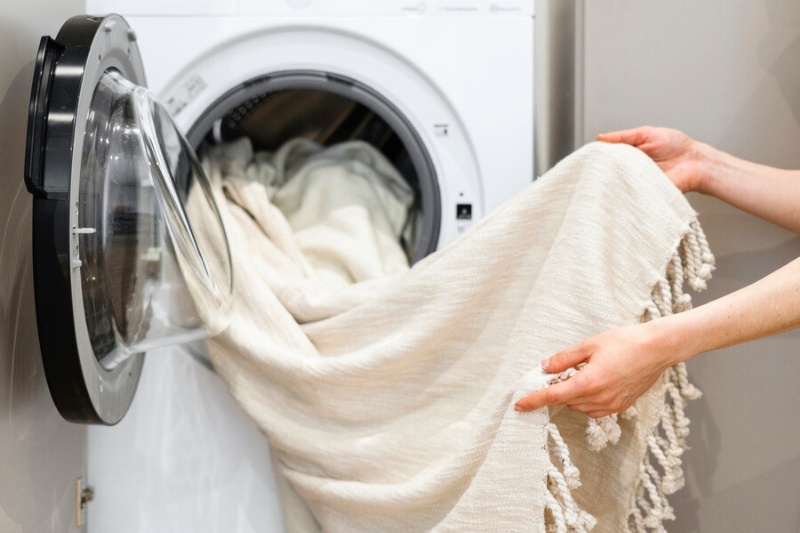Just pulled your blanket out of the washing machine only to find it shedding quicker than your pooch? It’s a mini nightmare, isn’t it?
It’s also annoying because you’ve just cleaned the throw, and now the fuzzy nonsense has started. You’d think washing the blanket would do more good than harm!
But, like most laundry worries, there’s usually a simple explanation. Find out why your blanket is shedding after washing below. And discover how to stop the shedding from happening, too.
What Causes Blankets to Shed After Washing?
If your blanket is shedding after it has been washed, it is a sign that:
1. The blanket has been washed incorrectly
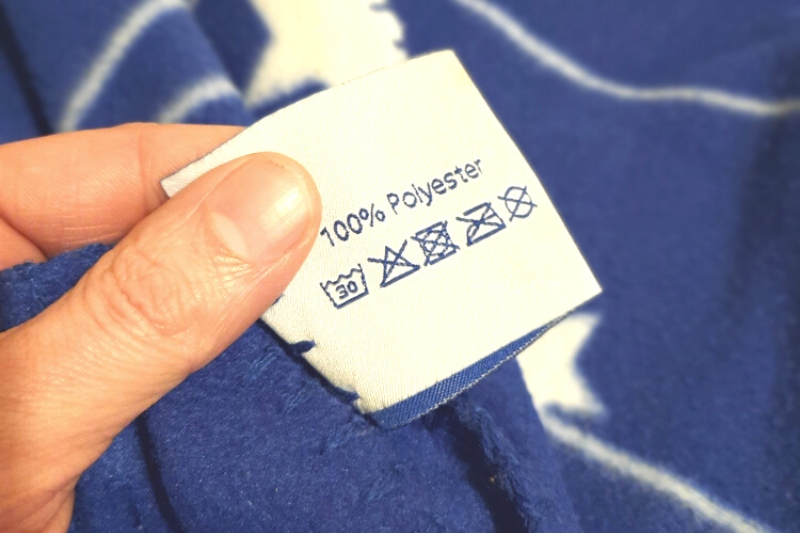
When caring for a blanket, you must ensure that you look after your snuggly piece in the way it likes.
A simple way to find out how to look after your throw is to read its care tag.
You’ll find all the information you need to know about washing your blanket on the label! All you need to do is adhere to the advice.
You’re washing your blanket wrong if you do the following:
- Using the wrong kind of detergent (for example, you’re not cleaning delicate fabrics with a gentle solution).
- Using too much detergent.
- Not giving the blanket enough space in the washing machine.
- Not choosing a suitable washing cycle for the material.
- Using too much fabric softener and dryer sheets.
To get a blanket to stop shedding, you should:
- Use the correct detergent (which is usually a mild/gentle one). If you use the wrong kind of detergent, like one made from bleach, you may weaken or seriously damage the fabric’s fibres and cause them to shed. And any brighteners in the product may impact the colour of your blanket.
- Use the correct amount of detergent. If you add too much detergent to the washing machine, you’ll end up with lots of suds that may not be rinsed out of the appliance or off your blanket properly. Ultimately, you could end up with detergent residue stains over your blanket, which won’t look or feel good. The excess detergent could also play havoc with the material’s fibres and cause shedding.
- Don’t overload the washing machine when cleaning your blanket. If you put too many things in the drum, the laundry won’t be agitated correctly and your items will come out of the wash partially cleaned.
Also, if you add too many things to the appliance when cleaning a blanket, the constant friction between the items (rubbing together) will lead to pilling (little broken fibres knotted together to form a ball).
- Pick the right cycle. This includes a low water temperature and less spin. If the water is too hot or the spin is too fast, it’ll put a strain on the material’s fibres and weaken them, and this could lead to shedding.
- Don’t use fabric softener and dryer sheets (and if you must use them, use them in small doses). Fabric softener sometimes has the opposite effect on blankets. So, you may end up with an itchy, scratchy type of blanket rather than a soft one. In addition, the softener may weaken the fibres and cause them to break. In turn, you get shedding.
2. Shedding could be linked to the manufacturing process
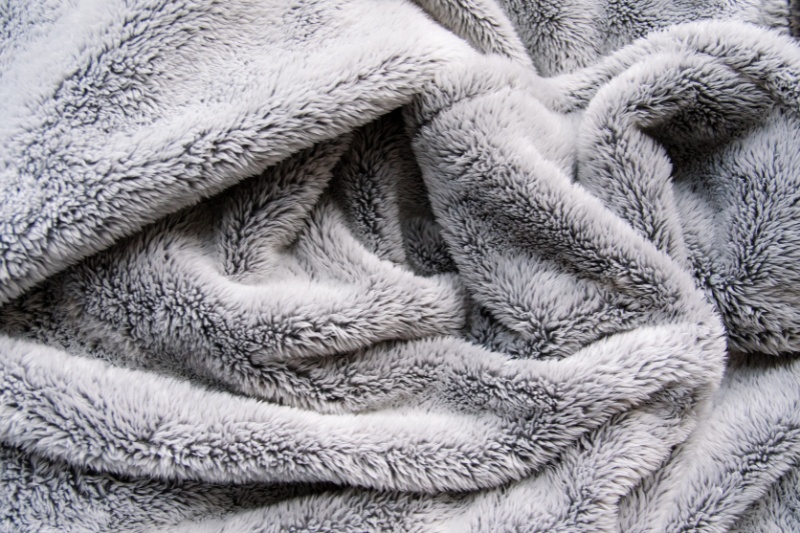
If your blanket is shedding, it could be a sign that excess or loose fibres weren’t removed during the manufacturing process. Hence, the blanket is shedding after being washed.
This shedding should reduce significantly after a few washes and as you continue to maintain your blanket (brushing).
In addition, the quality of the raw material used, the skill of the workers, and the standard of the machines used to make the blankets can impact shedding.
To reduce shedding, you should buy tightly woven blankets made from quality materials that have been created by reputable manufacturing companies that employ skilled professionals who take pride in their work. Consequently, the fabric will be more durable and should shed less!
3. New blankets shed after being washed
If you’ve just bought a new blanket and it’s shedding after being washed, don’t worry; this is natural.
As mentioned above, there may be loose fibres in the blanket that need to come out.
So, when you first get your blanket, the shedding is just these fibres detaching themselves from the material. With time and proper care, this shedding will reduce.
On the flipside, if you’ve got a very old blanket, it may be shedding because of its age. The fibres may have grown weak with time, so the fabric is getting fuzzy and pill-riddled.
4. The blanket has been dried incorrectly after washing
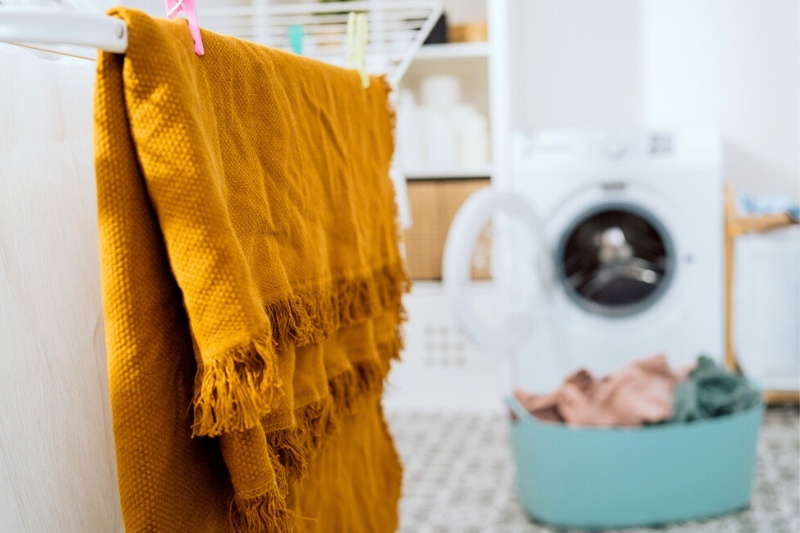
Your blanket may be shedding because it hasn’t been dried effectively. For example, you may have tumble-dried your blanket when it should have been dried naturally. (This can also lead to premature wear and tear-related problems).
Using large amounts of heat to dry blankets can sometimes put a lot of stress on the material. Consequently, the fabric may not withstand the hot temperature and will warp, shrink, or shed.
To find out how your blanket should be dried, look at its care label and adhere to the advice on there.
Most blankets should be draped over a clothesline (or spread out over a heated airer) and left to rest in a well-ventilated area for a few hours (to ensure even circulation).
In addition, blankets shouldn’t be left in direct sunlight for too long as the heat can damage the material’s fibres.
If you must dry blankets in a dryer, make sure you use a low heat and pick a short cycle.
5. The blanket has not been maintained pre- or post-washing
Sometimes, shedding occurs because the blanket hasn’t been taken care of effectively.
For example:
- The blanket is never brushed or shaved.
- The throw is never washed.
- The blanket is not aired out.
- The blanket doesn’t get vacuumed.
As a result of not looking after the blanket properly, you may notice that it starts to pill and shed. It may also become smelly and grubby looking.
To make sure your blanket is maintained, do the following:
- Treat stains immediately.
- Shake debris/loose fibres out of the blanket.
- Shave the material with a fabric shaver to get rid of the pills.
- Brush the throw or go over it with a lint roller.
- Gently hoover grime/threads off the soft surface (use the upholstery attachment!).
- Wash the blanket multiple times throughout the year.
6. The blanket has been overwashed

Overwashing a blanket will damage its fibres and cause them to break down. This then leads to shedding.
Try to clean your blankets once a month, but you can air them out and brush/lint roller them in between cleans to keep them refreshed (do this weekly).
7. How you store your blanket can impact shedding
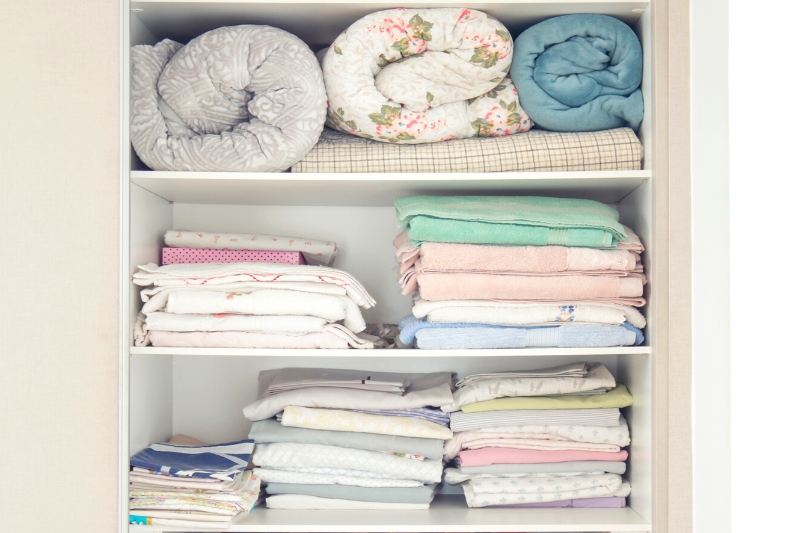
Unsuitable storage can also impact how much a blanket sheds. So always make sure that you wash, dry, and store your blanket in an airtight container/vacuum bag when it’s no longer in use.
If you don’t clean your blanket before putting it away or you store it when it’s wet, you’ll end up with moisture and mould-related issues.
8. How much you use your blanket effects shedding
If you use your blanket a lot and it’s constantly rubbed against other materials (your clothes/upholstery), you will see more pilling and shedding.
This is particularly true for synthetic blankets that may not be tightly woven and not made from as high a quality material.
To reduce shedding, you could maintain your blankets properly. Also, swap between throws so you don’t stick to using one blanket all the time. This may help to reduce wear and tear-related shedding.
How Do You Get Fuzz Off Blankets After Washing?
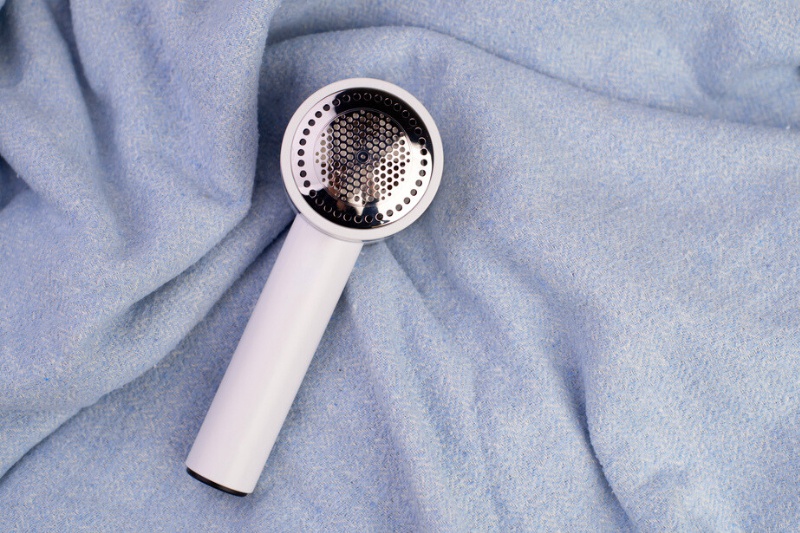
Here are a few ideas to get you started:
- Grab a fabric shaver and remove the pills and loose threads from the blanket’s surface. Don’t press too hard, or you’ll snag the blanket.
- Use a lint roller to remove grime and loose threads.
- Gently vacuum the blanket to take out dirt, dust and fibres.
- Brush the blanket weekly to remove excess fibres and dirt from the soft surface.
- Hand-wash your blankets if you’re concerned about cleaning them in a washing machine. Hand-washing laundry is a gentler approach and may be more suitable for certain materials, like delicate ones.
Tip: If you want to find out if a blanket will shed, do a few tests on it:
- Rub your palm on a patch of blanket for several minutes to see if any of the fibres lift or move around and bind. If they do, there’s a good chance that the blanket will shed.
- Pinch the blanket multiple times to see if any fibres lift up. If they do, you can assume that the blanket will shed.
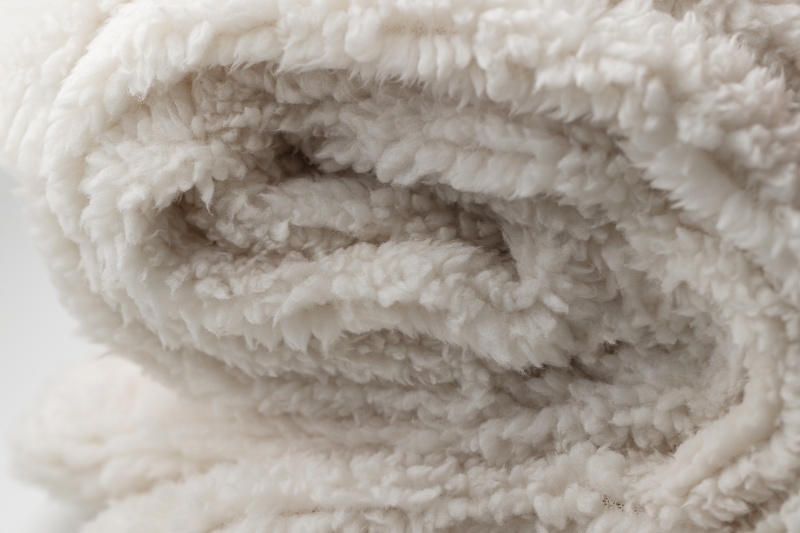
Most blankets will shed to some extent. But you can reduce the amount of shedding by choosing a good quality blanket and by maintaining it properly (see the advice above).

Bethan has a passion for exploring, reading, cooking and gardening! When she’s not creating culinary delights for her family, she’s concocting potions to keep her house clean!
